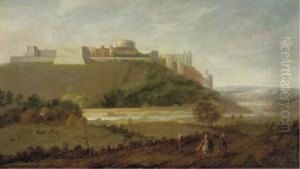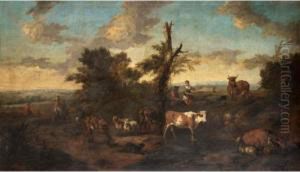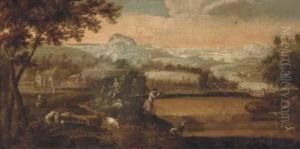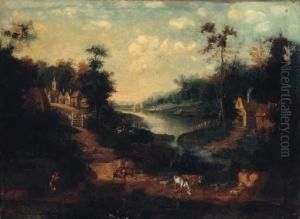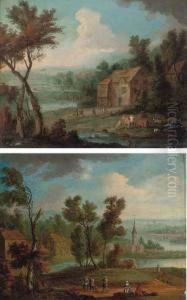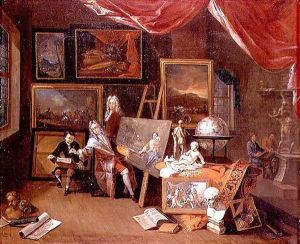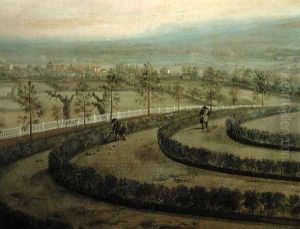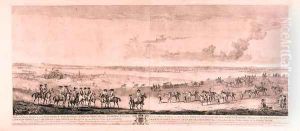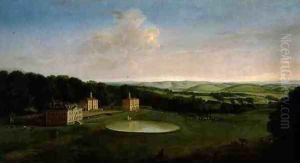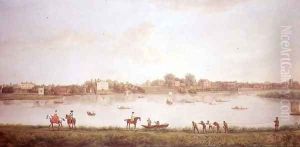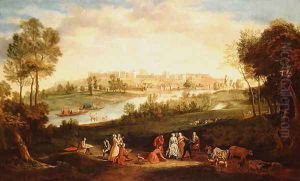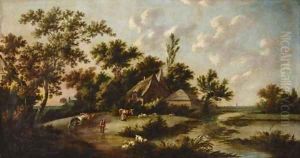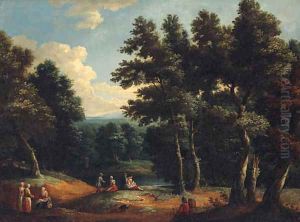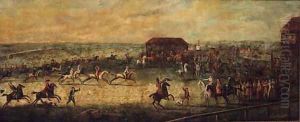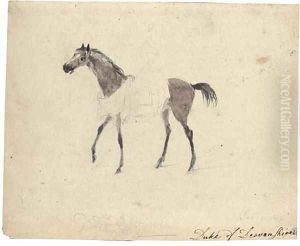Peter Tillemans Paintings
Peter Tillemans was a Flemish painter who became prominent in England during the early 18th century. Born in Antwerp in 1684, he was part of a family with strong artistic traditions. His journey into art began under the tutelage of art teachers in his hometown, which was then one of Europe's major centers for art and culture.
Tillemans moved to England around 1708, a period when the demand for art was flourishing under the patronage of the aristocracy and the emerging wealthy classes. He initially worked with a fellow countryman and painter, Pieter Casteels, who had established himself in England. Tillemans quickly adapted to the tastes and interests of the English clientele and became known for his versatility as an artist.
He is best remembered for his works on sporting subjects, particularly horse racing and hunting scenes, which reflected the English gentry's passion for these pastimes. Tillemans was also skilled in painting topographical landscapes, historical scenes, and portraits. His ability to capture the English countryside with elegance and accuracy contributed to his success and popularity.
Among his notable works are the panoramic views of country estates and the paintings depicting Newmarket races, which were highly valued by his patrons. His landscapes, often dotted with figures and animals, show a keen observation of nature and a talent for composition that resonated with the aesthetic sensibilities of his time.
Peter Tillemans also played a role in the early development of cricket as a subject in art. His paintings of cricket scenes are among the earliest known depictions of the sport, capturing its social context and the environment in which it was played.
Tillemans' career in England spanned over two decades, during which he influenced the English school of painting. He died in 1734, leaving behind a body of work that is still appreciated for its historical value and artistic quality. His contributions to the genres of sporting and topographical art remain significant in the history of British art.
